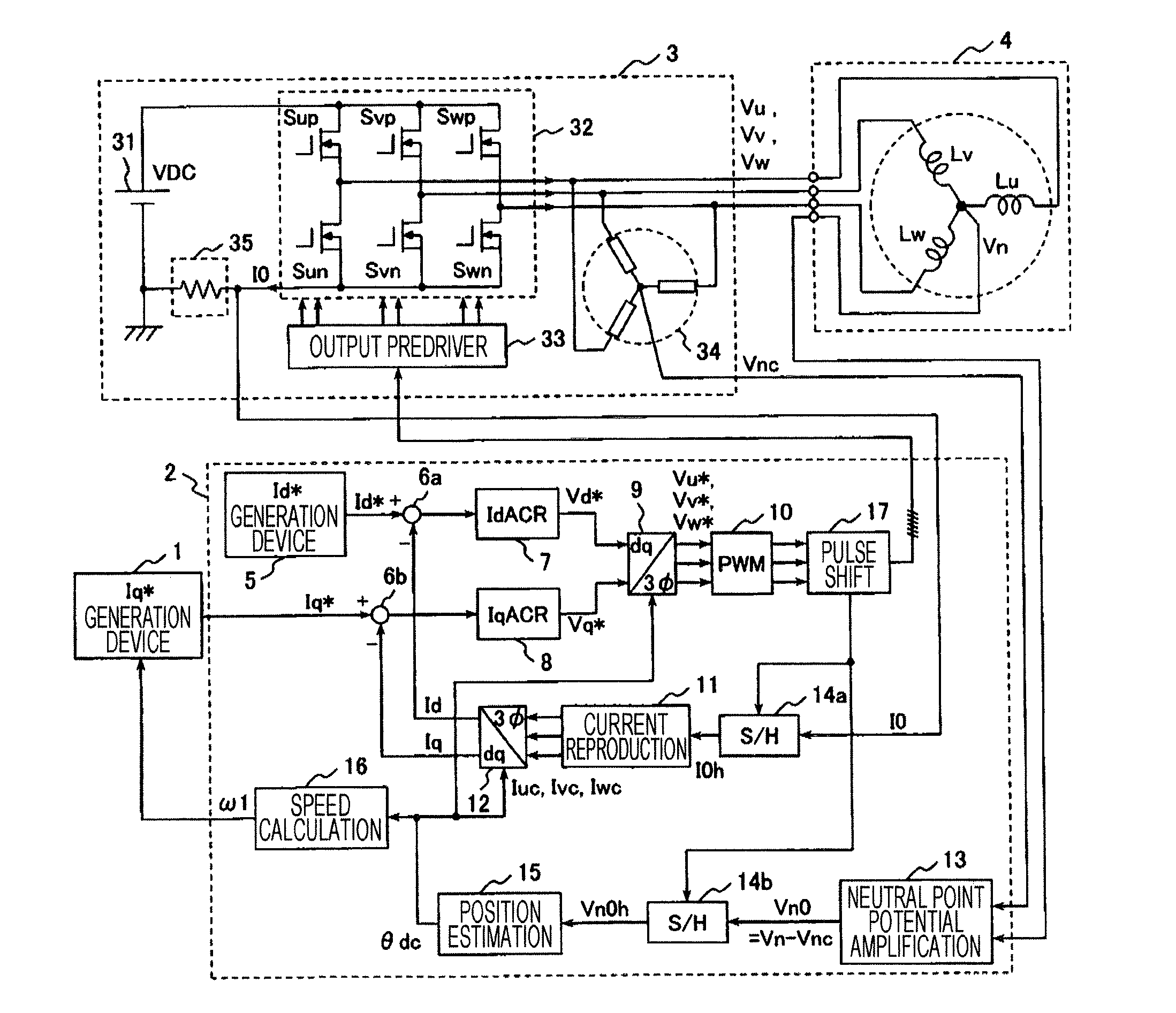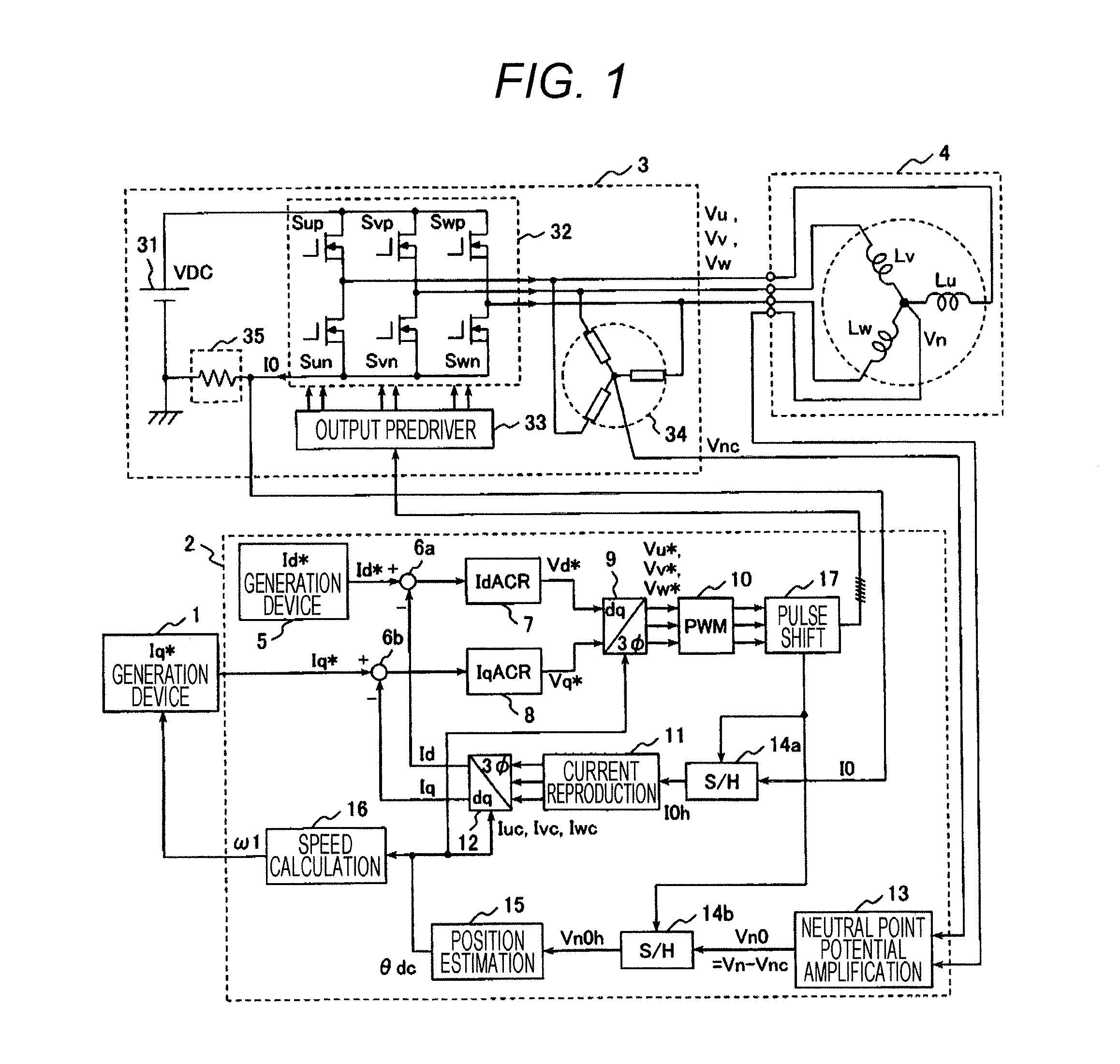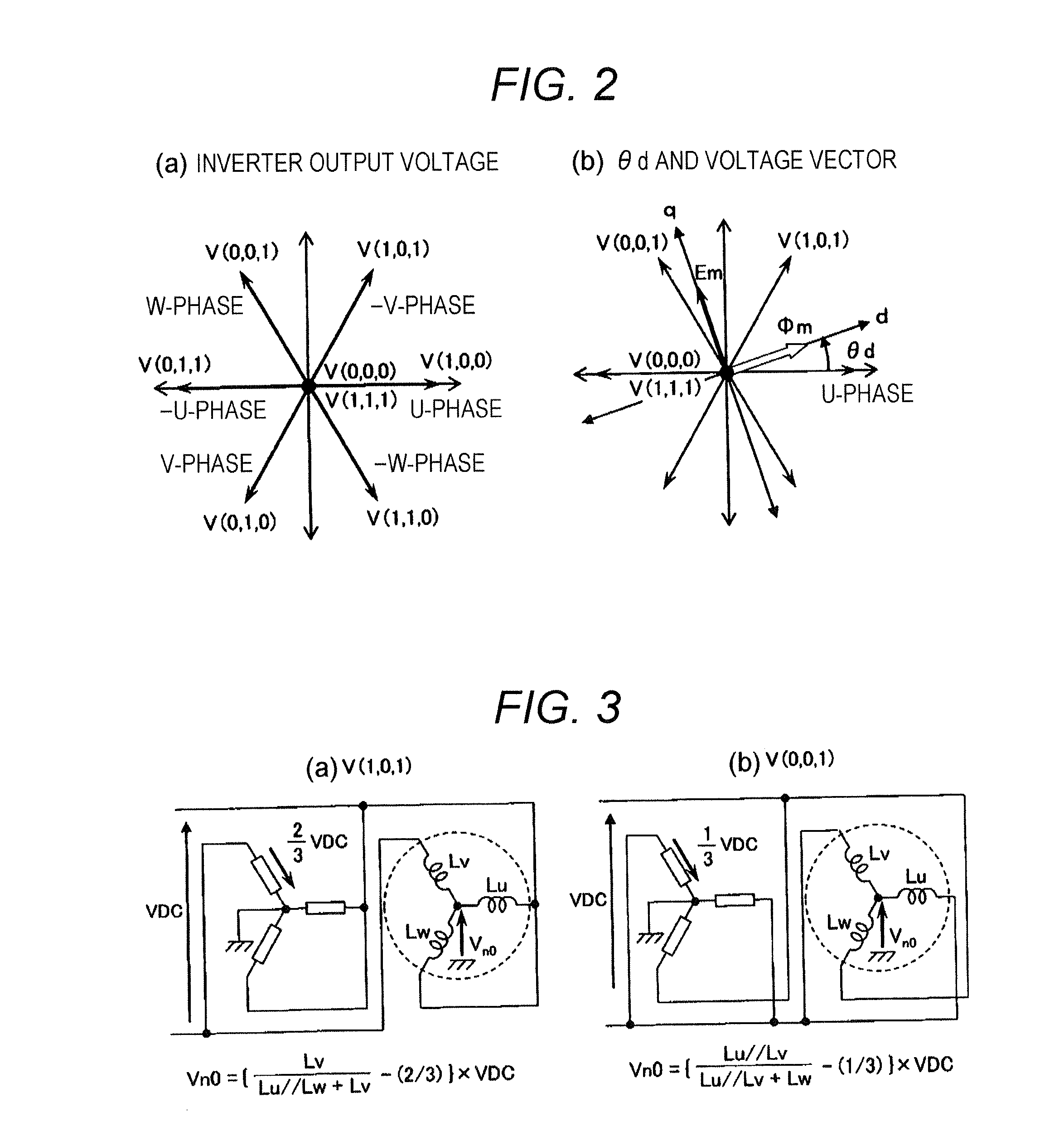Driving System For Synchronous Motor
a technology of synchronous motors and driving systems, applied in the direction of motor/generator/converter stoppers, electronic commutators, dynamo-electric converter control, etc., can solve the problems of reduced sensitivity, hidden position information in noise, and large problem of sensor-less control, etc., to achieve the effect of increasing the number of switching and high efficiency
- Summary
- Abstract
- Description
- Claims
- Application Information
AI Technical Summary
Benefits of technology
Problems solved by technology
Method used
Image
Examples
first embodiment
[0060]FIG. 1 is a block diagram illustrating a configuration of a motor driving system according to a first embodiment of the present invention.
[0061]An object of this motor driving system is to drive a permanent magnet motor (three-phase synchronous motor) 4. Roughly speaking, this motor driving system includes an Iq* generation device 1, a control device 2, an inverter main circuit 32, an inverter 3 including a one-shunt current detection device 35, and a permanent magnet motor 4 which is target of driving.
[0062]The Iq* generation device 1 is a circuit for generating a current command Iq* corresponding to torque of an electric motor. This Iq* generation device 1 is a control device located above the control device 2. Usually, this has a mechanism of generating required current command Iq* by observing an actual speed ω1 so that the rotation speed of the permanent magnet motor 4 attains a predetermined speed. The current command Iq* which is output of the Iq* generation device 1 is...
second embodiment
[0115]Subsequently, the second embodiment of the present invention will be explained.
[0116]In the first embodiment, in order to detect Vn0, the pulse shift device 17 is introduced to shift the PWM pulse wave, whereby the output periods of the voltage vectors other than zero vector are increased, and two kinds of vector not included in the original PWM waveforms can be newly output, and therefore, the precision of the position estimation is improved.
[0117]In the example of the first embodiment, not only the original voltage vectors V (0, 0, 1), V (1, 0, 1) but also V (1, 1, 0), V (0, 1, 0) are newly applied. In this case, it is understood from FIG. 2(a) that V (0, 0, 1) and V (1, 1, 0) are vectors in direction opposite to V (1, 0, 1) and V (0, 1, 0), respectively. As described above, not only the vectors in the opposite direction but also voltage vector in a direction not included in PWM before the pulse shift, e.g., V (1, 0, 0) are added, this makes the effect of search of the rotor...
third embodiment
[0120]Subsequently, the third embodiment of the present invention will be explained with reference to FIG. 7.
[0121]The first and second embodiments showed that the pulse shift device 17 is introduced, so that the types of voltage vectors applied to the motor can be increased from two types to three or four types. In these embodiments, the switches of all of the three phases perform switching with the same frequency as the triangle wave carrier. In contrast, in the third embodiment, an example where the switching frequencies of the three phases are different (two-phase switching) will be explained.
[0122]FIG. 7(a) shows two-phase switching method using triangle wave carrier. Unlike FIG. 4, it is understood that the three-phase voltage commands Vu*, Vv*, Vw* are in contact with the upper side peak of the triangle wave carrier. In this example, Vw* which is the largest among the three-phase voltage commands matches the upper side peak value of the triangle wave carrier. In this manner, ...
PUM
 Login to View More
Login to View More Abstract
Description
Claims
Application Information
 Login to View More
Login to View More - R&D
- Intellectual Property
- Life Sciences
- Materials
- Tech Scout
- Unparalleled Data Quality
- Higher Quality Content
- 60% Fewer Hallucinations
Browse by: Latest US Patents, China's latest patents, Technical Efficacy Thesaurus, Application Domain, Technology Topic, Popular Technical Reports.
© 2025 PatSnap. All rights reserved.Legal|Privacy policy|Modern Slavery Act Transparency Statement|Sitemap|About US| Contact US: help@patsnap.com



